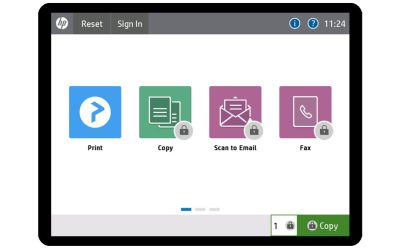This white paper looks at the types of threats targeting a cloud-based print infrastructure and what preventative actions mitigate those threats. The paper also looks at how Cloud-based printing fits in with the expectations of data protection under the GDPR and other compliance measures such as HIPAA.
Executive Summary
Recent years have resulted in challenges to business operations and working conditions. The Covid-19 pandemic cemented the home working movement, adding new layers of security requirements above and beyond network and cloud security. The enterprise print environment, already part of cloud-first digital transformation projects, became a stalwart of home working. The hybrid office-home work environment persists, with the cloud facilitating this shift.
A report from Deloitte shows that cloud and home/hybrid working are changing the face of the office.1
87% of IT decision-makers identified the pandemic as a key driver of increased cloud uptake and expect a decline in on-premises workloads by 2025.1
Cloud-based print management has data at its core, and like all digital data-rich systems, cloud printing must deal with cyber-attacks that target data. In addition, the hybrid work environment has added to the security challenges.2 Since the pandemic, zero trust has entered the business lexicon as a guiding principle in controlling access to data. In the world of printing, access is key to robust security.

As well as security principles and guidelines, the laws and regulations guide and enforce organizations in security and privacy best practices. These regulations are essential to meet customer and government expectations. Many of these regulations have been or are in the process of being updated. These updates reflect the expanding threat matrix introduced by Internet-enabled devices and hybrid working. Regulations such as the EU’s NIS2 and HIPAA have data protection at their heart, and systems that utilize cloud computing technology must be incorporated into our overall drive to compliance.




